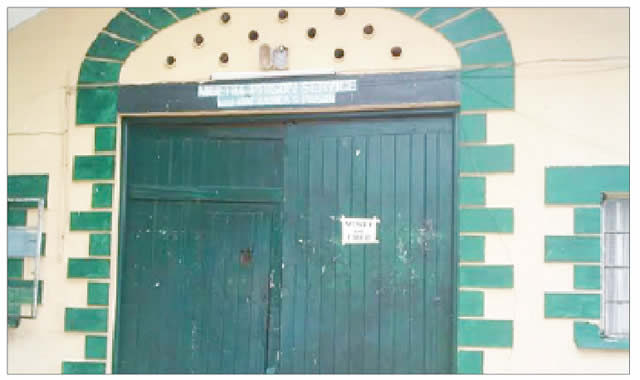
NIGERIA’S correctional centres need urgent reformation. The centres are overcrowded and inhabitable. The structures are aged and prone to collapse, enabling hardened criminals to escape. The federal and state governments should reform the system.
Fresh statistics from the Lagos State Government reinforce the decrepit state of the centres. The Attorney-General and Commissioner for Justice, Lawal Pedro, stated at the 2024 ministerial briefing that the seven correctional and custodial services in the state were strained by 104 per cent. They were built to accommodate 4,754. Instead, there are 9,691 inmates in the centres.
Although they are federal prisons, Lagos, like other states, is left to bear the brunt of the unworkable system.
The situation is grim. At the Badagry Custodial Centre, the structure is overwhelmed. With a capacity of 320 inmates, it houses 508.
The Ikoyi Custodial Centre is also stretched beyond its capacity. It is meant to house 800 inmates but currently has 3,311, Pedro lamented.
The Kirikiri Female Custodial Centre has 271 inmates but 371 are living there. The Kirikiri Medium Custodial Centre is cramped with 2,949 inmates against its capacity to hold only 1,940. The Kirikiri Maximum Custodial Centre has a capacity of 1,056 inmates but has 2,017 incarcerated there.
While the Borsal Training Institute has a capacity of 250 inmates, 507 of them are confined there. However, there is respite at the Oregun Correction Centre. The centre has a capacity of 120 inmates but houses 88 inmates.
The overcrowding is replicated in the other custodial centres across the country.
Nigeria’s justice system is plagued by abnormality. The criminal justice system is ponderous. The police haul minor offenders into prisons or mismanage cases that can be easily resolved. Many are arrested for wandering, an offence unknown to the law. Case files disappear and cases are not well tracked to justifiable conclusions. Justice is denied to many.
Most of the prisons were built in colonial times and have been poorly managed, instigating incessant jailbreaks. The recently collapsed Suleja Custodial Centre was built in 1914 to house 250 inmates but has 449 inmates.
Consequently, jailbreaks have occurred in Owerri in Imo, Kuje in the FCT, Kabba and Koton-Karfe in Kogi, Abolongo in Oyo, Jos in Plateau, Mandala in Kwara, Ijebu-Ode in Ogun, and Agbor in Delta in the recent past.
According to government data, awaiting-trial inmates supersede convicted inmates in the prisons. There are 244 custodial centres with 80,507 inmates as of April 29, the Nigerian Correctional Centre says. There are 25,033 convicted inmates and 55,474 ATIs, a 31/69 per cent ratio.
The Enough is Enough charity says that apart from the strain on the weak facilities, inmates are prone to disease, exposed to environmental hazards, and are fed at N750 per day, despite the food inflation in the country.
Although the Muhammadu Buhari administration initiated the building of new custodial centres in the six geopolitical zones, this did not fully take off. President Bola Tinubu must swiftly complete the prisons.
In Europe, governments have eased the prison systems by creating restrictions for offenders while they keep their jobs. Prisoners are mandated to engage in full-time work in 12 of the 16 German states.
To ease the congestion, the judicial process should be faster. Punishment for some offences should be strictly fines instead of jail terms. Other offenders should be made to engage in public service to reduce the numbers.
There is an urgent need to construct new custodial centres and re-evaluate the policing and legal systems to reduce unwarranted arrests.
Ultimately, the centre and the federating units should collaborate to excise prisons from the Exclusive Legislative List in the 1999 Constitution. This will allow states to build more correctional centres, a solution to the chaos.
END

Be the first to comment